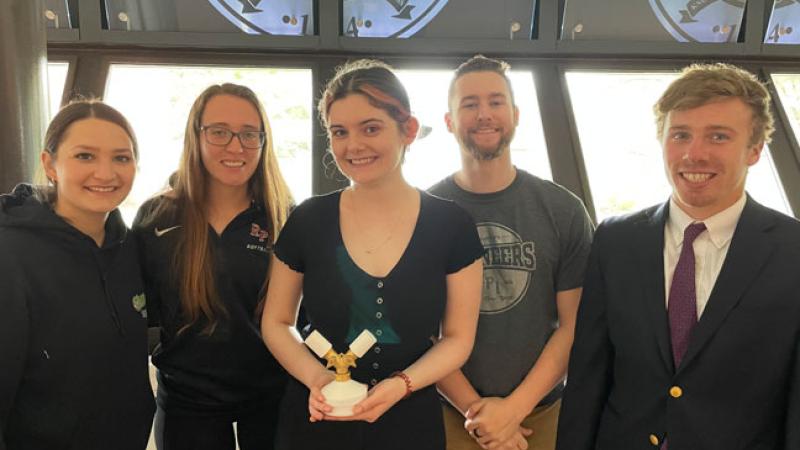October 2, 2023

This spring, a team of biomedical engineering students at Rensselaer Polytechnic Institute helped create a critical component that may be used to diagnose skin cancer rapidly and at the point of care, pending FDA clearance.
SurgiVance Inc., a New York City-based startup and developer of this potentially game-changing technology, needed a sample preparation method as part of its innovative biospecimen processing platform that was secure and contained.
“The students were asked to come up with a staining mechanism,” said Hisham Mohamed, Ph.D., senior lecturer in biomedical engineering at Rensselaer. “The stain is toxic and the entire process had to be contained to prevent the exposure of medical professionals.”
Axel Batlle ’23, Isabell Devereaux ’23, Sam Harrington ’23, Chloe Lewandowski ’23, and Cassidy Sheehan ’23 came up with a multi-chamber device. A tissue sample is inserted into a staining confinement chamber. Then, a valve is opened to release the stain onto the sample. Next, a third chamber releases a washing solution. The result is a properly stained and washed sample that can be slid under a microscope for analysis. On top of that, the solution is cost-effective. It is also completely passive, using only gravity to exchange the reagents and excluding any mechanically active components.
“It was a challenge for students to ensure that doctors would not be exposed to the stain and that their device would not leak,” said George Lee, Ph.D., Rensselaer lecturer in biomedical engineering. “They came up with a few potential solutions and proceeded with the best one, building and improving on multiple prototypes along the way.”
“A newly incorporated Prototype Fabrication Studio at Rensselaer allowed our team to create multiple versions of our prototype to narrow down to the best approach for the completion of a functional device,” said Lewandowski. “This allowed us to send a version of our prototype to New York City to be tested with similar materials as those that would be used within a procedure. This greatly helped the team’s understanding of where adjustments could be made to improve our design significantly.”
The result was impressive, winning the top prize of “Best Design” at the ceremony for the close of the capstone research team projects.
“The Rensselaer students were immensely helpful to SurgiVance in developing a diagnostic surgical pathology solution,” said Daniel S. Gareau, M.C.R., Ph.D., SurgiVance founder. “It is, effectively, a histopathology lab in a box. It has the potential to transform skin cancer diagnosis and really improve patient care. There is really a big problem getting doctors to handle a neurotoxin, acridine orange, which is used in the process. When the Rensselaer students began the project, I provided them with my solution design. They reviewed it, along with five other designs that they developed, and found that one of their designs was superior. It was very different from mine. Bravo!”
“This project, and the course as a whole, was a great introduction to team collaboration and brainstorming,” said Sheehan. “I have grown to be more confident and bring new ideas to whatever environment I'm in. Perhaps, those ideas may just change the world!”
“The most important thing I took away is how to interpret design requirements from a description of an idea,” said Harrington. “This has paid dividends in my professional career in terms of figuring out the core requirements behind an experiment, presenting my work effectively, and being diligent about getting started.”